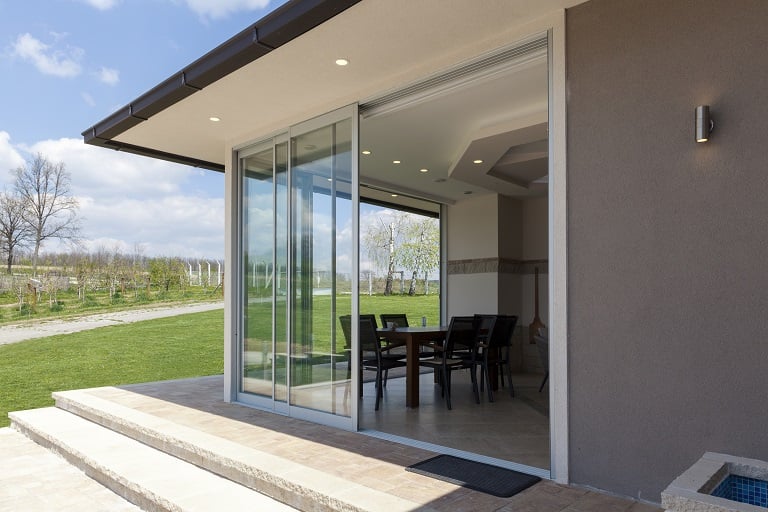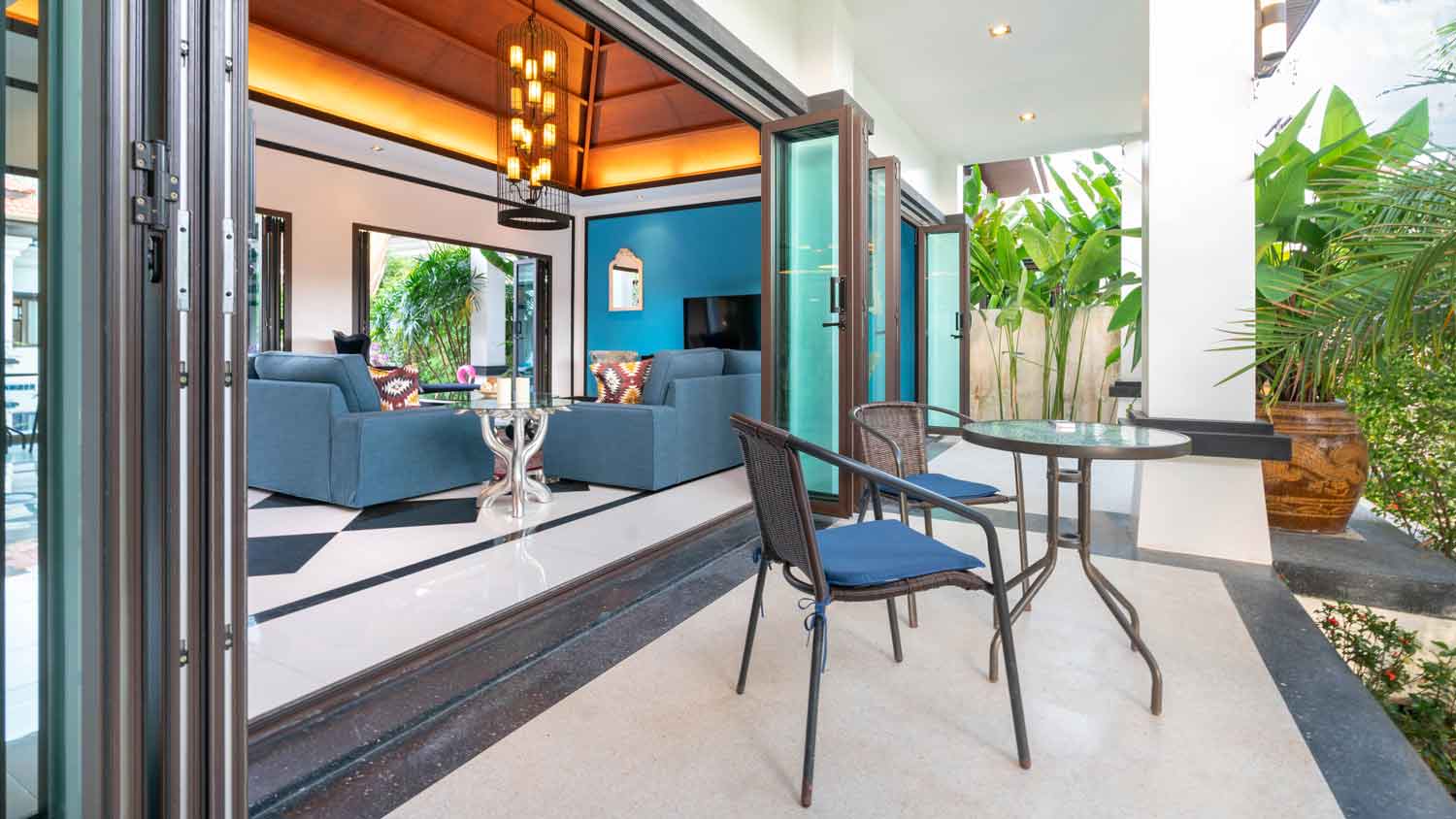These Are the 4 Best Types of Patio Doors
Open your home up to the possibilities


When you walk out onto your patio, the door you’ve chosen will directly impact the look and feel of that space. The right door should let in the right amount of light and fresh air, creating an open and inviting path for you and your guests. An attractive opening can increase your home’s value with aesthetics, security features, and energy savings.
Even among the various sliding glass door types, you’ll find different costs and space requirements for installation. Before you call a local door installation pro, learn about the top patio door options and compare their features, pros, and cons to help you find the best fit for your home.
1. Sliding Patio Doors
You’ve likely seen sliding, or gliding, doors before. They’re the standard patio door choice used by many homebuilders. Sliding glass doors typically feature two large glass panels, one of which stays fixed while the other slides along a track in the floor. Their straight, simple lines create a functional, contemporary look.
Sliding doors are ideal in compact spaces since furniture can be placed near the door without getting in the way. They are easy to use, even for kids, and the door can stay open in any position to allow easy access to outdoor spaces and to control the flow of fresh air into a home. Many models include a screen door option as a standard.
Pros of Sliding Patio Doors
Occupy minimal space: They don’t swing in or out like traditional doors.
Light: Large glass panels are a great source of natural light.
Affordable: They're at the low end of the spectrum for patio door costs, coming in at $1,000 to $3,000.
Stays fixed: The door can stay open in any position for easy access and airflow control.
Cons of Sliding Patio Doors
Security: Latch locks and glass can break and may need improvements.
Limited entry space: The opening for entry and airflow is limited to the sliding panel.
Limited sizes: A standard size means you need special orders for larger openings.
Maintenance: Debris, alignment, and roller issues cause doors to get stuck over time.
2. French Patio Doors
French doors, or hinged doors, are another classic patio door option. They typically feature one or two glass door panels set inside a frame. Both panels can swing open on a hinge like a traditional entry door.
While roughly the same size as a sliding door, French doors offer a larger entryway for access and airflow since both panels can open. Also in contrast with standard sliding doors are the decorative elements common on French doors, including window grilles, molding, elegant hardware, arched tops, and complex patterns.
Pros of French Patio Doors
Customization: They offer more versatile design options than sliding doors.
Low maintenance: A hinged design doesn’t jam or fail like sliding or folding mechanisms.
Security: Deadbolts are often used, similar to other hinged door designs.
Cost: Depending on the model, it can cost less than sliding doors at $400 to $4,000.
Cons of French Patio Doors
Limited views: The frame creates a border and middle divider that blocks the view.
Limited entry space: They’re larger than sliding doors, but not as large as bifold or telescoping.
Limited sizes: Like sliding doors, the standard sizes make for a smaller opening.
3. Telescoping Patio Doors
Telescoping doors are also called multi-slide doors. They take the idea of standard sliding doors and make them more versatile, with three or more sliding glass panels stacked on top of one another. Some versions even have a wall pocket or closet to hide open door panels.
Because all the panels can slide, telescoping doors allow for wide, elegant openings and huge panoramic views. This makes them ideal for homes with large patios, decks, or outdoor living spaces. However, the stacking panels require extra space and typically come with a raised slider threshold that can be difficult to navigate for people with wheelchairs or limited mobility.
Pros of Telescoping Patio Doors
Customizable: You can choose the number of sliding panels you want for a custom door size.
Seamless: Panels can hide for seamless transition between indoors and outdoors.
Light: The expansive opening maximizes natural light.
Energy efficient: Large glass panels allow the sun to heat your space in colder months.
Cons of Telescoping Patio Doors
Cost: These cost less than bifold doors, but more than other types, at $1,500 to $5,000.
Insects: These don’t integrate well with screens, meaning large openings can let in bugs.
Space: The more panels you have, the thicker the stack and the more space you need.
Accessibility: The raised lip of the slider track is difficult for people with limited mobility.
4. Bifold or Accordion Patio Doors

Homeowners with expansive patio spaces or wraparound decks would benefit from bifold or accordion doors. These multi-panel doors are connected by hinges. They slide open on a track that’s flush with the floor, but then fold together like an accordion to create a large opening connecting indoor and outdoor living spaces.
The large open space created by bifold doors not only allows more natural sunlight and fresh air to flow into your home, but also creates a continuous flow for guests to follow when you’re entertaining large groups. The folding doors are also a safe option, with multiple locking points and security features.
Pros of Bifold Patio Doors
Versatile: You can push these doors open and leave them in any position—fully or partially.
Large opening: Traffic can flow in and out easily when the doors are fully open.
Security: Multiple concealed locking points, latches, and deadbolts run along the frame.
Flush threshold: The track is safe and accessible, without any tripping hazards.
Cons of Bifold Patio Doors
Insects: These don’t integrate well with screens, so large openings can let in bugs.
Space: You need to install these along a large wall with no furniture or obstructions.
Cost: The materials and labor for door installers can cost between $3,000 and $10,000.
Frame: Thicker frames add security but tend to block views when the doors close.




















